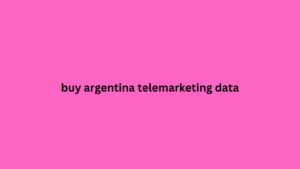However, in order to bridge the increasingly blurred line between the physical and digital worlds, Google has updated its Peak Hours tool , which instead of just giving you an estimate of how busy a store is, tells you in real time whether the store is full or not. It’s a nifty tool that introduces a powerful new feature.
This tool, which already helped Google users buy argentina telemarketing data avoid long lines to visit their favorite restaurants, now has a wider range. As its name suggests, the “peak times” tool gives an estimate of how busy a given location is, depending on the day and time, and now in real time. The tool can only be used through the Google Maps app .

peak-hour
To use this Google feature, you simply need to search for an establishment in the search engine or on Google Maps . Once the results and information are displayed, peak times will appear below an icon saying “Live” . This data is obtained by comparing real-time movement with regular movement at the location.
The user can also file a complaint if the capacity data does not correspond to the truth. Next to the “live” icon, you will find an option that says: “correct?”. Clicking on the option will open a tab with the phrase “What did you think?” where you can answer a questionnaire that checks whether the information given was below the real situation.
The Peak Hour feature uses users' location data—both historical and real-time—to determine the number of people in a given location.
